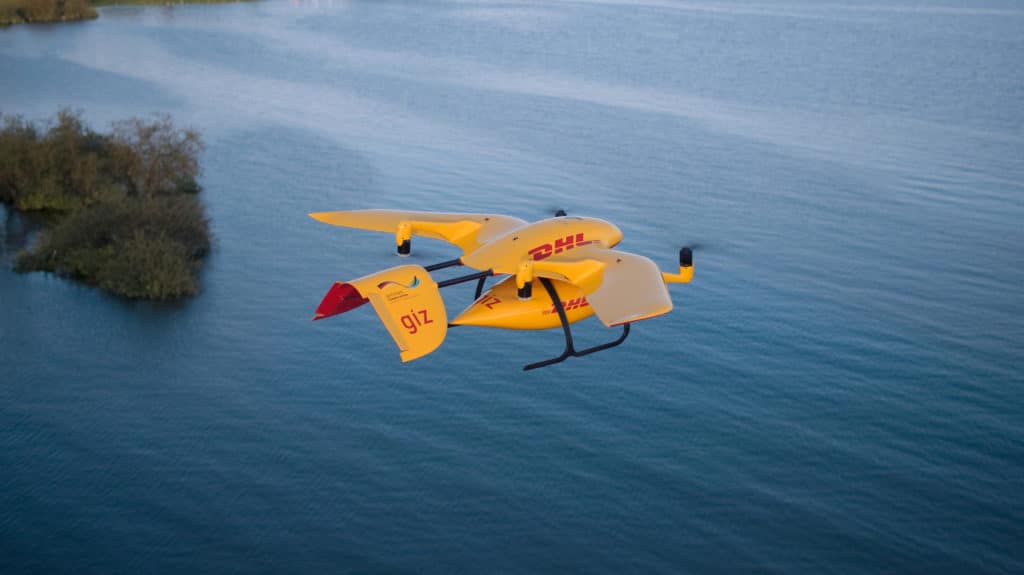Drones have made a profound and dramatic improvement in the public safety and emergency services field. They are quick and easy to deploy, and the costs are significantly less than traditional aircraft. They support and guide the boots on the ground, often with remarkable results.
Not only can they provide a clear observation of the situation and environment, but they can also be used to deliver critical supplies when necessary and are often used in defence and combating crime.
What is the Key to Drones in Public Safety and Emergency Services?
Several factors need to be considered before engaging in drone operations.
Training
The operator needs to be skilled and experienced to conduct public safety and emergency services effectively. The are several companies that offer quality training to ensure that drone operators achieve the best results. Training and experience will allow first responders to perform better, faster, and with improved results. Results that save lives!
Environment and Conditions
Following on from the above, external factors pose a major challenge. Urban and rural environments, low light, and a raft of other issues pose multiple obstacles and challenges. Drone pilots as well as the drones themselves need to work effectively under harsh conditions.
Sourcing Correct Drones
Not all drones are suitable. They need to be robust, fast, easy to deploy and have suitable cameras. Other features such as thermal imaging are also important for some applications. They need to be able to operate in extreme conditions.
Challenges in Drone Public Safety and Emergency Services
Funding
This remains a major challenge. Given the many problems we currently face, drones are often not a top priority. The ease of use, speed, and efficiency needs to be weighed against the cost. Drones can operate effectively at a fraction of the cost of other emergency service methods.
Regulations
State and federal law have been slow in adapting to the rapid evolution of drone technology. This is understandable as the progress has been exponential. It is, however, a major stumbling block in the growth of this essential service.
Fortunately, the FAA and other agencies are making significant progress to address this issue. The FAA has invested significant time, effort, and money in providing a workable framework for such operations.
Public Perception
Many are still wary of drones and have safety and privacy concerns. While they can save lives and help in disasters work must be done to improve public perception. Education and transparency are necessary.
Coordination
There is a clear need for effective coordination between law enforcement agencies and other parties involved in public safety and emergency services. All parties need to work together to ensure a safe and effective system.
Training
While several competent companies are operating in this space there is still a skills shortage. People on the ground involved in drone operations for public safety and emergency services need to have the necessary skills and ability to conduct the operations with accurate and beneficial results while following safety guidelines. Top-level certification is necessary, and practice is critical. Even the best drones will not be helpful if the operator is not skilled.
Applications of Drones in Public Safety and Emergency Services
Drones have been a dramatic game changer in this field. What used to take many hours to establish and cost a small fortune can now be done instantly at a fraction of the cost.
Here are some of the main applications of drones in emergency services and public safety:
Search and rescue
Drones use multiple technologies including thermal imaging as well as precision cameras. They can be deployed rapidly at a cost far less than helicopters or fixed-wing planes. Drones are also able to reach and inspect areas that traditional aircraft would not be able to access. They can also reach areas that would be slow and dangerous to access with vehicles or on foot. They are invaluable in these critical missions.
When used in conjunction with ground crews, drones can assist in determining the environment, assessing possible risks, and guiding the team.
Routine public safety
Drones can be used to monitor and deliver critical feedback on large crowds, protests, and public spaces such as beaches or parks. They can detect potential threats and help law enforcement perform their duties with greater speed and accuracy.
Disaster control
Emergency responders can assess and respond rapidly, again a fraction of the cost and risk of traditional methods. Drones are used in floods, fires, earthquakes, and other disasters. The images and videos they can capture are invaluable in planning, evaluating, and addressing the issue. The information aids responders to carry out their missions faster and helps to improve safety for those involved.
Traffic management
Measuring and monitoring traffic during disasters is another area drones are useful. They deliver rapid and real-time information on accidents, traffic flow, and congestion. This allows those managing traffic to provide a more accurate and efficient solution. They are also useful for accident reconstruction.
Chemicals and Hazardous Materials Incidents
Radiation, gas, and other sensors can be installed on drones to detect and measure hazardous materials (hazmat). This is an extremely risky operation for humans to perform. Using drones with the necessary equipment reduces the risks significantly. It is also faster and less expensive. Once the operation has been completed, drones can be used to test air quality and monitor the situation. The information provided by drones helps to mitigate the situation and allows responders to make rapid and informed decisions.
Emergency communication
Where communication systems have been disrupted or no infrastructure is present, drones can be used to allow for critical communication. This is particularly important during natural disasters.
Firefighting
Thermal cameras and fire-extinguishing equipment attached to drones can be used for aerial firefighting. Critical information can be delivered to ground crews to identify hotspots and fire patterns and behaviour. This makes the response more accurate and efficient. Drones can also reach areas that might otherwise be inaccessible or dangerous to access. Fire retardants or water payloads can be used in these areas with no risk to human life.
Delivery of Medical Supplies
Drones are often used to transport and deliver urgent medical supplies to areas that are hard to reach or dangerous to enter by other means. They are also used to collect blood samples for the same reasons.
Leading Drone Companies in Public Safety and Emergency Services
Here are some of the top companies operating in this space.
DJI
As one of the leading commercial and consumer drone companies it is no surprise that DJI is active in drones for public safety and emergency services. Among other models, the DJI Matrice 30 and M30T are often used. The latter has an integrated 640×512 radiometric thermal camera and is ideal for low-light operations.
Apart from the robust construction and efficient operation, the use of the drone is enhanced by the FlightHub 2 software that allows for accurate fleet management.
The M30 can handle extreme temperatures (-20°C to 50°C) and operates effectively even in heavy rain (IP67 rating). It is light and portable and delivers more than 40 minutes of flight time. Naturally, it has impressive resolution and great obstacle avoidance. Set up is quick and easy and it charges rapidly.
Other DJI models that are used in this space include the DJI Matrice 300 RTK and the Mavic 3T.
Parrot
Parrot is another brand that is familiar to drone enthusiast and their ANAFI USA model is a popular choice for public safety and emergency services.
It is also compact and portable and quick to set up and deploy. It has superb camera resolution as well as a thermal imaging camera that allows it to accurately detect heat sources. This makes it ideal for firefighting, search and rescue, and other emergencies. It handles rain, dust, and sand.
Another benefit is that it is relatively affordable and cost-effective making it a wise choice for multiple agencies. Given the challenging conditions these drones operate in crashes and damage do occur. Having said that, the construction is robust and durable.
It has a 4k camera and 32X zoom. The 3-axis hybrid stabilization and auto-focus allow it to capture crisp clear video footage and images. It performs well in low-light environments.
Also useful for safety and emergency applications is the 512-bit key AES-XTS encryption. This ensures the safety and integrity of data.
Autel Evo II 640T
Another worthy contender is the Autel Evo II 640T. It sports an impressive thermal imaging camera with 640 X 512 resolution and a powerful zoom. This compact lightweight drone boasts around 40 minutes of flight time. It is fast with speeds up to 40 mph.
It operates well in poor light and can handle bad weather conditions. Thermal imaging is enhanced by visual spectrum imaging technology. The software, Pix4DReact, is also impressive and ideally suited to public safety and emergency service operations.
Examples of Drones Used for Public Safety and Emergency Services
There are many impressive examples where drones have been used to mitigate and assist in emergency services and public safety.
The 2010 Earthquake in Haiti
Drones were used to gather critical census information, accurate mapping and identifying problematic areas after the 2010 earthquake in Haiti. GPS and other means were insufficient, slow, and not entirely accurate. The information received from drones was fast and accurate allowing for informed decisions and allocation of resources to where they were needed most.
2013 Typhoon Haiyan in the Philippines
Huginn X1 Quadcopters were used to guide and assist the various agencies involved in search and rescue operations after the 2013 typhoon in the Philippines.
Lessons Learned from Drone Use in Public Safety and Emergency Services
The main takeaways from the examples of drone use are:
Speed of Deployment
In the case of a disaster when lives and infrastructure are at risk, every second counts. While drones can assist to speed up the process, they need to be readily available where and when needed. Precious time is wasted if one must source drones for such incidents.
Skills and Training
We have stressed the importance of skills and training before but in life-threatening situations is it essential that highly skilled and experienced operators are available if the mission is to be beneficial.
The Future of Drones in Public Safety
The technology and benefits of using drones for these applications have already been proved many times across the world. As the technology, training and skills, availability, and coordination improve they will become more important.
Agencies involved in these missions must have the necessary equipment and training to rapidly deploy drones in emergencies or after a disaster. Regulation needs to catch up to ensure that there is control over the process without slowing it down or hindering the growth of this necessary technology.
Conclusion
Crime, natural disasters, wildfires, traffic issues, and humanitarian issues are a reality of life. They show little sign of slowing down. Fortunately, modern technology can go a long way to mitigating these issues, giving those dealing with the problems accurate real-time information to enable them to respond faster and make informed decisions when time is critical.




